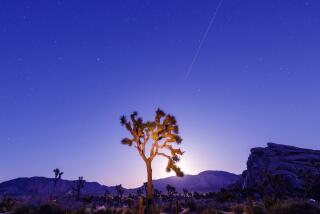Astronomers find first evidence of a star eating its own planet
For the first time, astronomers have seen evidence of an aging star consuming its own planet. Such events are not uncommon as aging stars expand in size, engulfing nearby planets. But the events happen relatively quickly on a cosmological time scale and it is considered unlikely for one to be observed directly.
The star in question is known as a red giant. Such stars begin with a mass about the same as that of the Earth’s sun. As they age, the hydrogen fusion reactions in their core become less efficient and most of the fusion is transferred to the outer shell of gases. The increased fusion makes the shell hotter and as much as 1,000 times brighter than normal, causing the diameter of the star to expand continually until its radius reaches a size equivalent to the Earth’s distance from the sun.
A team headed by astronomer Alexander Wolszczan of Penn State University used the 9.2-meter (362-inch) Hobby-Eberly Telescope at the McDonald Observatory in the Davis Mountains of Texas to study a red giant star named BD+48 740. They reported in Astrophysical Journal Letters that the star has a diameter about 11 times that of our sun. Spectroscopy showed that the star contains an abnormally high amount of lithium, a rare element created primarily during the Big Bang.
Lithium is normally consumed in the fusion reactions of stars, so its presence in such high concentrations is unusual. One alternative method by which lithium can be formed is when a star consumes a planet, and the researchers believe that is what happened in this case.
That possibility is supported by the discovery that the star has another planet, about 1½ times the size of Jupiter, in a highly elliptical orbit. “Such orbits are uncommon in planetary systems around evolved stars and, in fact, the BD+48 740 planet’s orbit is the most elliptical one detected so far,” said co-author Andrez Miedzielski of Nicolaus Copernicus University in Torun, Poland. The team speculates that the energy released when a smaller planet dived into the star boosted the larger planet into its unusual orbit. “The highly elongated orbit of the massive planet we discovered around this lithium-polluted red-giant star is exactly the kind of evidence that would point to the star’s recent destruction of its now-missing planet,” added co-author Eva Villaver of the Autonomous University of Madrid in Spain.
Twitter/@LATMaugh






